Bringing a new dog into your home is an exciting time, but it’s also an opportunity to consider factors that can impact your lifestyle. While financial aspects like breed-specific health issues and pet insurance are important, unexpected demands on your time can arise from extensive grooming or extra cleaning due to excessive shedding. For many potential pet owners, particularly those with allergies, a dog’s shedding level is a primary concern. This article will help you navigate the world of medium-sized breeds known for their minimal shedding. Finding the right companion can significantly enhance your life, making daily routines smoother and your home cleaner.
It’s important to clarify a common misconception: no dog is truly “non-shedding.” All dogs shed to some extent; however, certain breeds shed significantly less than others, making the term “low-shedding” more accurate. Many low-shedding breeds possess double coats that naturally trap loose hairs, preventing them from falling around your home. This means these breeds often require regular grooming to remove the trapped hair, which would typically be shed by other breeds. Generally, maintaining good skin and coat health for these dogs will involve consistent coat care and possibly daily or weekly brushing. To help you make an informed decision about your next furry family member, we’ve compiled a list of medium-sized breeds known for their low-shedding coats and the specific care their unique coats require. If you’re also considering medium dogs that don t shed a lot, this guide offers an excellent starting point.
Understanding Low-Shedding Coats and Grooming Needs
When selecting a low-shedding breed, it’s crucial to understand that “low-shedding” doesn’t equate to “no maintenance.” In fact, many breeds that shed minimally require more diligent grooming to prevent matting and maintain skin health. Their coats often trap dead hair, necessitating regular brushing, and sometimes professional stripping or clipping. Neglecting these grooming needs can lead to discomfort for your dog and more serious skin problems. Understanding the specific coat type and grooming requirements for each breed is essential for responsible pet ownership, ensuring both your dog’s well-being and a tidy home environment.
The Top 10 Medium-Sized, Low-Shedding Dog Breeds
Here are some of the best medium-sized dog breeds known for their low shedding, along with insights into their unique grooming needs. These breeds offer a wonderful balance of companionship and manageable shedding, making them ideal for many households.
Basenji
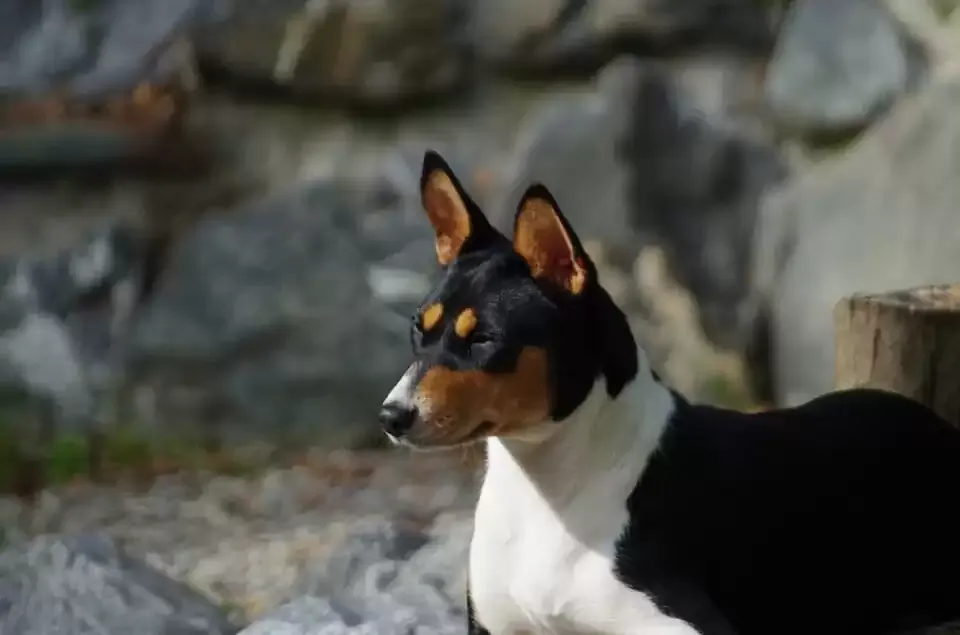 An alert Basenji dog with short, fine reddish-brown and white fur, standing outdoors with a curious expression.
An alert Basenji dog with short, fine reddish-brown and white fur, standing outdoors with a curious expression.
The Basenji is celebrated for its spirited and affectionate personality, along with its remarkable ability to keep its coat exceptionally clean. This breed is quite adept at self-grooming, but they still benefit from a weekly brush to remove any dead hair and keep their sleek coat in top condition. While often categorized as a typical low-shedding breed, it’s worth noting that Basenjis do shed. However, their hair is so fine and short that the shedding is far less noticeable compared to many other dog breeds, making them a great choice for those seeking minimal hair around the house.
Kerry Blue Terrier
This spirited and charming terrier makes a delightful addition to many homes. As a low-shedder, the Kerry Blue Terrier is particularly popular among individuals who prefer to avoid excessive pet hair on furniture and floors. However, prospective owners should be aware that their beautiful, distinctive blue-grey coat demands consistent care. Daily brushing is a must to prevent matting, and a visit to an experienced professional groomer for clipping is required every four to six weeks to maintain their coat’s unique texture and appearance.
Labradoodle
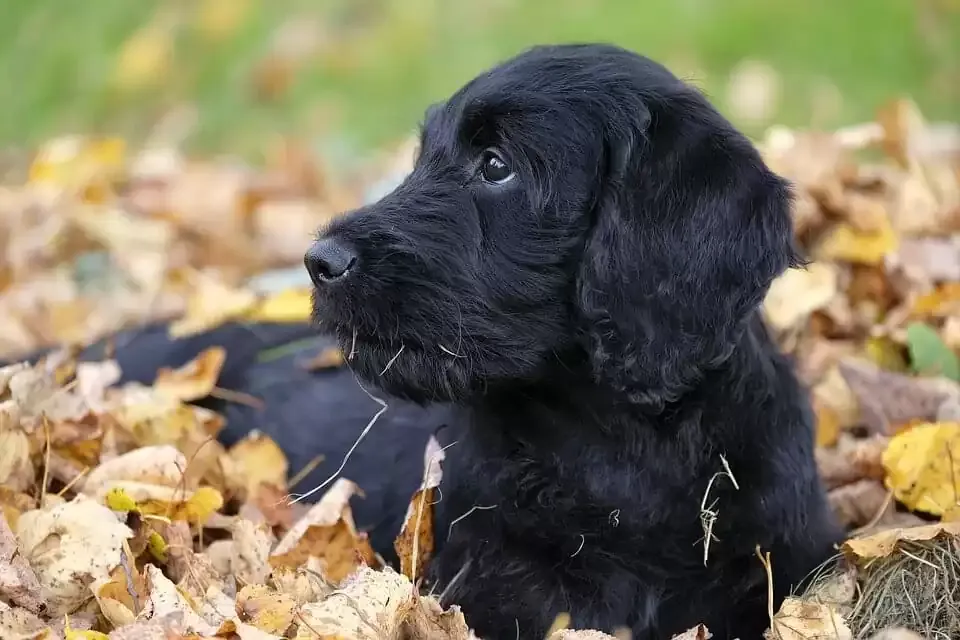 A fluffy Labradoodle with a curly cream-colored coat, looking attentively.
A fluffy Labradoodle with a curly cream-colored coat, looking attentively.
A relatively new and incredibly popular addition to the low-shedding category, the Labradoodle was originally bred to be a hypoallergenic guide dog with a minimal-shedding coat. When considering a Labradoodle, choosing a reputable breeder is crucial to ensure the quality of their coat and overall breed characteristics. Labradoodles can have three different coat types: Hair Coat, Wool Coat, and Fleece Coat. The Fleece and Wool coats are generally the lowest shedding varieties for this breed. Regardless of the coat type, all Labradoodles require weekly brushing to promote healthy skin and remove dead or loose hairs, keeping them looking their best.
Irish Terrier
Known for its tough yet charming demeanor, the Irish Terrier sports a wiry and dense double coat. Like other double-coated breeds, the dead hairs tend to get trapped within the undercoat rather than falling out. This means the “shedding” needs to be manually managed through weekly brushing to remove these trapped hairs. Additionally, an Irish Terrier will require a professional plucking or hand-stripping every six months. This process is essential for removing loose hair, maintaining the coat’s texture, and encouraging healthy new hair growth.
Puli
 A Puli dog showcasing its distinctive long, corded white coat, standing in a grassy area.
A Puli dog showcasing its distinctive long, corded white coat, standing in a grassy area.
The Puli is an unmistakable breed, instantly recognizable by its striking long, corded dreadlocks and wonderful temperament. While their unique “cords” are visually captivating, they demand specific attention, especially when the dog is young. Puppies may need assistance separating their cords as they form, continuing until the adult coat fully develops. When the coat is still fluffy, it requires regular brushing to prevent dirt accumulation and matting. Once the cords are fully formed, brushing is no longer necessary, but the cords will need to be separated and cleaned periodically. It is highly recommended to seek advice from a professional breeder regarding the specific coat care for this distinct breed.
Standard Schnauzer
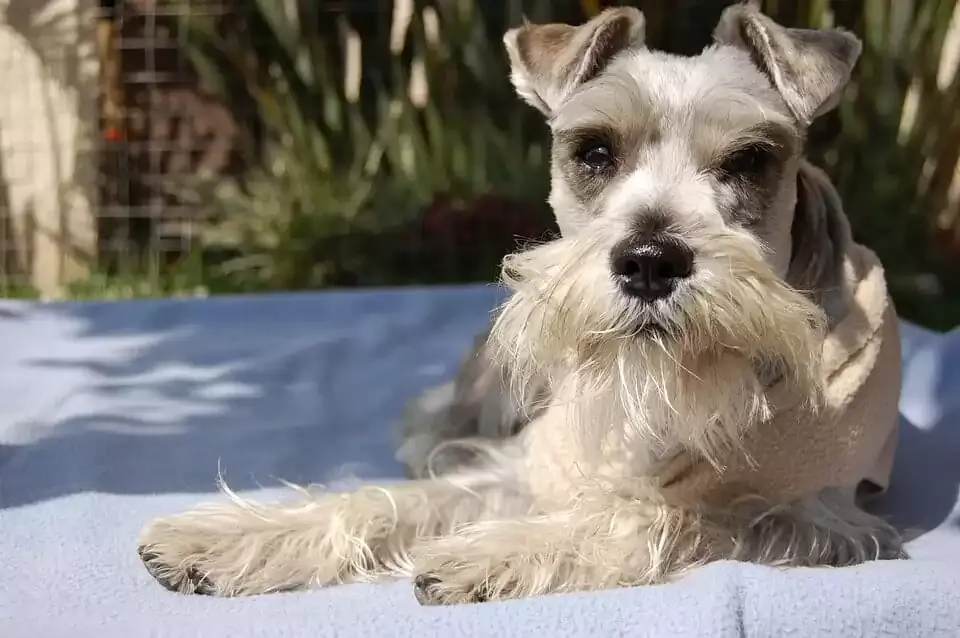 A Standard Schnauzer with its characteristic salt-and-pepper wiry coat and bushy eyebrows, sitting attentively.
A Standard Schnauzer with its characteristic salt-and-pepper wiry coat and bushy eyebrows, sitting attentively.
This popular and distinctive breed is also an excellent choice when it comes to minimal shedding. The Standard Schnauzer boasts a double coat, where the wiry outer layer effectively traps the loose hairs from the softer undercoat. To maintain their characteristic sharp appearance and prevent painful matting, they require a significant amount of grooming. Their beard and leg furnishings, in particular, need daily attention, and the entire coat should be hand-stripped every six months. It’s important to remember that if you opt to clip rather than strip your Schnauzer’s coat, they will tend to shed more, altering the coat texture and increasing hair around the home.
Tibetan Terrier
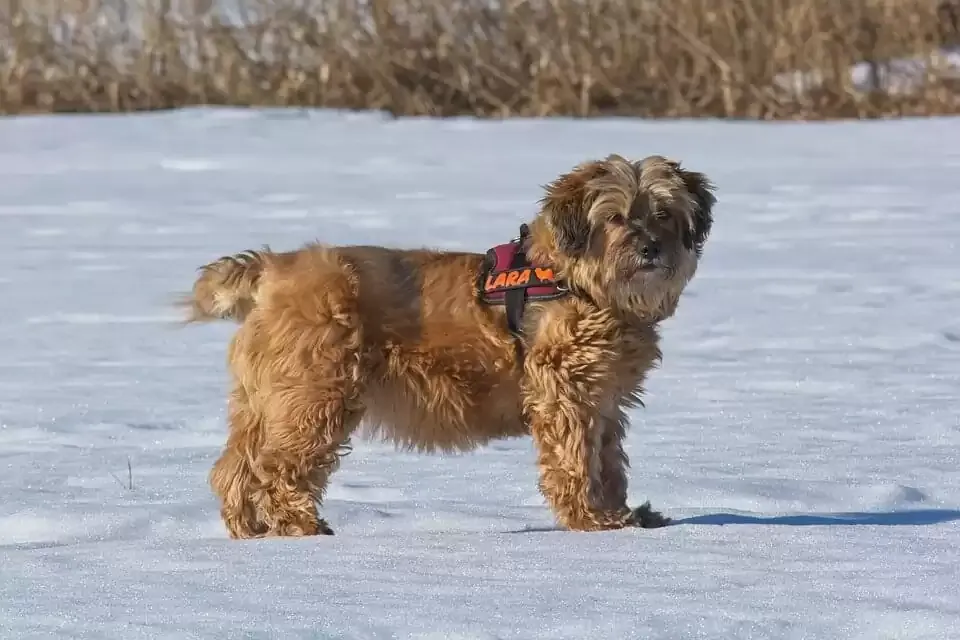 A fluffy Tibetan Terrier with a long, shaggy coat, looking gently towards the camera.
A fluffy Tibetan Terrier with a long, shaggy coat, looking gently towards the camera.
This charming canine companion is renowned for its beautiful, long, and flowing coat, which can be either wavy or straight. While stunning, this coat demands daily grooming to prevent tangles and painful mats from forming. Maintaining the Tibetan Terrier’s luxurious appearance requires a significant time commitment and energy. If you are unable to dedicate daily time to grooming, it might be advisable to consider another low-shedding breed with less intensive coat care requirements. Since they have a double coat, it’s crucial to ensure that your brushing reaches the undercoat to effectively remove any tangles. Many Tibetan Terrier owners find it beneficial to enlist the expertise of a professional groomer to assist with their extensive grooming needs. For those interested in medium sized dogs that don t shed and are calm, the Tibetan Terrier offers a gentle temperament alongside its unique grooming schedule.
Welsh Terrier
The Welsh Terrier is well-known for its playful antics and lively personality, and like many low-shedding breeds, it requires a fair amount of grooming attention. Their wiry coat needs to be brushed three or more times per week to prevent tangles and remove dead hair, unless they are regularly clipped. Owners should be aware that clipping can cause this breed to shed slightly more than if the coat is maintained through stripping. Some owners choose to forgo clipping and instead have their dog’s coats professionally hand-stripped every six months. This method helps remove dead hair, maintain the coat’s natural texture, and minimizes shedding around the home.
Soft-Coated Wheaten Terrier
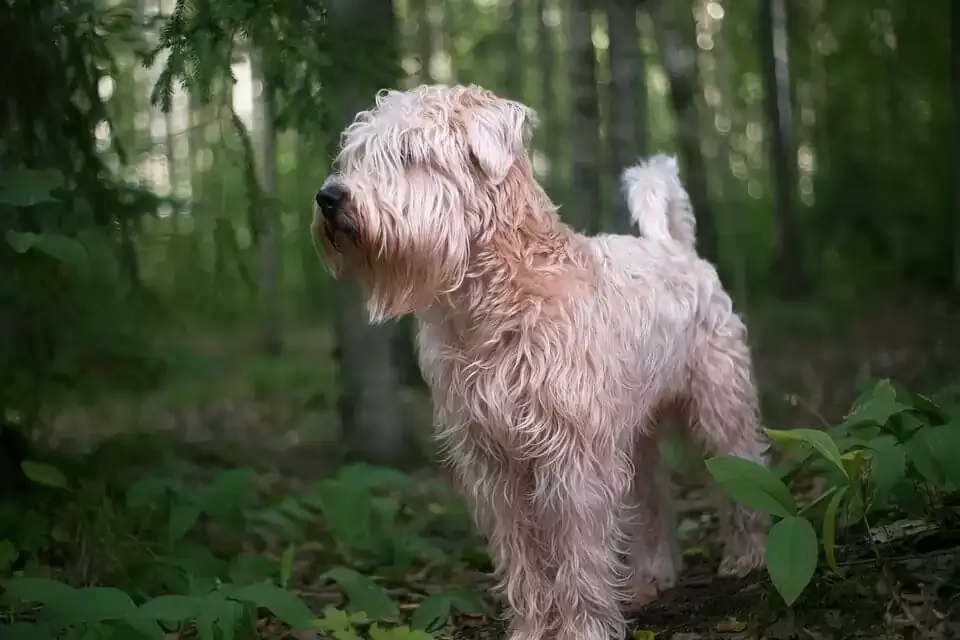 A Soft-Coated Wheaten Terrier with a beautiful, wavy, golden-tan coat, looking friendly.
A Soft-Coated Wheaten Terrier with a beautiful, wavy, golden-tan coat, looking friendly.
The Soft-Coated Wheaten Terrier captivates with its stunning, silky, and wavy coat, truly a head-turner. Unlike many terriers, this breed has a single coat, which simplifies grooming somewhat. However, daily brushing is still essential to prevent matts and tangles from forming in their luxurious fur. Some owners appreciate a slightly scruffier look for their beloved pooches, allowing them to reduce brushing frequency to three times per week. Many owners also choose to take their Soft-Coated Wheaten Terriers to a professional groomer for regular trimming and clipping to manage their coat effectively. This breed is a fantastic option if you’re exploring types of dogs that don t shed much.
Whippet
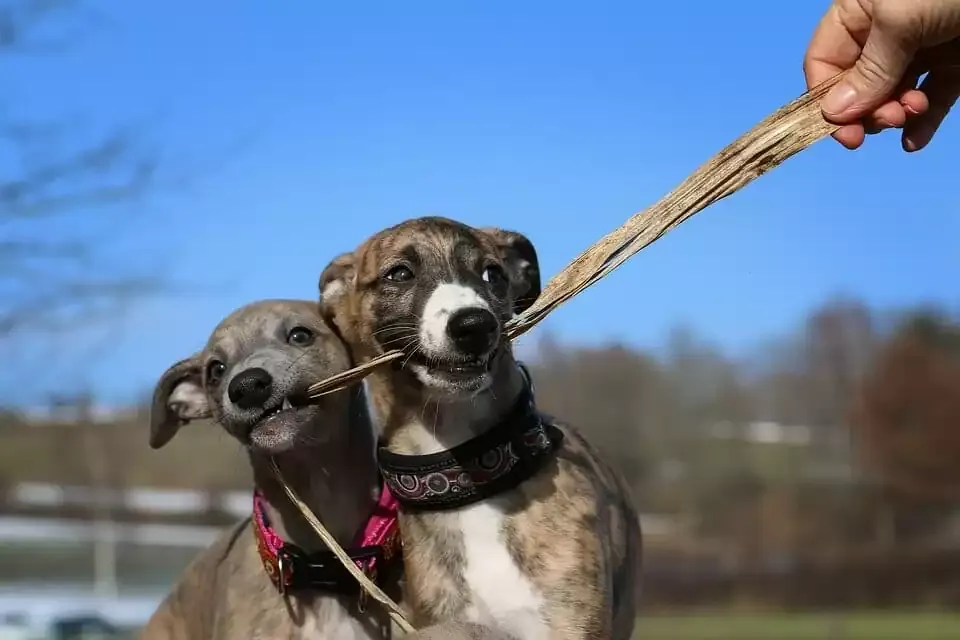 A sleek Whippet with a short, smooth fawn-colored coat, standing gracefully outdoors.
A sleek Whippet with a short, smooth fawn-colored coat, standing gracefully outdoors.
The Whippet is a popular and energetic dog, making it a favorite among owners looking for a low-shedding companion. Known as a “wash-and-wear” breed, Whippets require minimal grooming to keep them in excellent condition. A simple weekly brush is usually sufficient to remove any dead or loose hairs, keeping their short, smooth coat healthy. However, due to their very short and thin coats, extra care should be taken to keep a Whippet’s skin in good condition. It’s not uncommon for their delicate skin to be prone to small injuries or tears, so regular checks are advisable.
Considering Hypoallergenic Dog Breeds for Allergies
When allergies are a concern, it is paramount to consult with your doctor to pinpoint the exact allergen. Some individuals are allergic to dander (skin flakes), while others react to dog saliva or urine. In such cases, simply choosing a dog breed with limited shedding might not fully alleviate your allergy symptoms. For those specifically looking for minimal allergic reactions, understanding best hypoallergenic dogs that don t shed can be very helpful.
It is always recommended to gain a clear understanding of your specific allergies. Furthermore, before committing to a purchase, visit the breeder and spend as much time as possible interacting with your chosen breed. Pay close attention to your body’s reactions and determine if your allergies can comfortably cope with constant contact with the dog. This proactive approach can save you from potential discomfort and ensure a harmonious relationship with your new pet.
Conclusion
Choosing a medium-sized dog breed that doesn’t shed much can significantly contribute to a cleaner home and potentially reduce allergy triggers. While no dog is entirely non-shedding, the breeds listed above are excellent choices for minimizing hair around your living space, provided they receive appropriate grooming. From the self-cleaning Basenji to the elegantly corded Puli, each breed offers unique characteristics and grooming demands that should be carefully considered.
We hope this comprehensive guide has helped you explore some of the best medium-sized, low-shedding dog breeds and their specific care requirements, enabling you to find the perfect four-legged companion for your lifestyle. Understanding their needs will ensure a happy, healthy pet and a comfortable home environment. For more insightful articles on canine care, please subscribe to our newsletter. You can also find additional useful information on pet allergy sources, prevention, and treatment from reputable organizations like the Australasian Society of Clinical Immunology.
